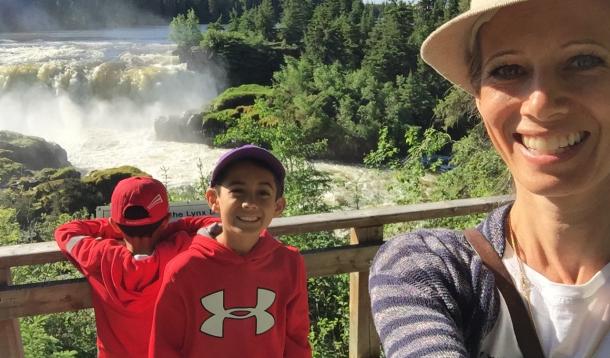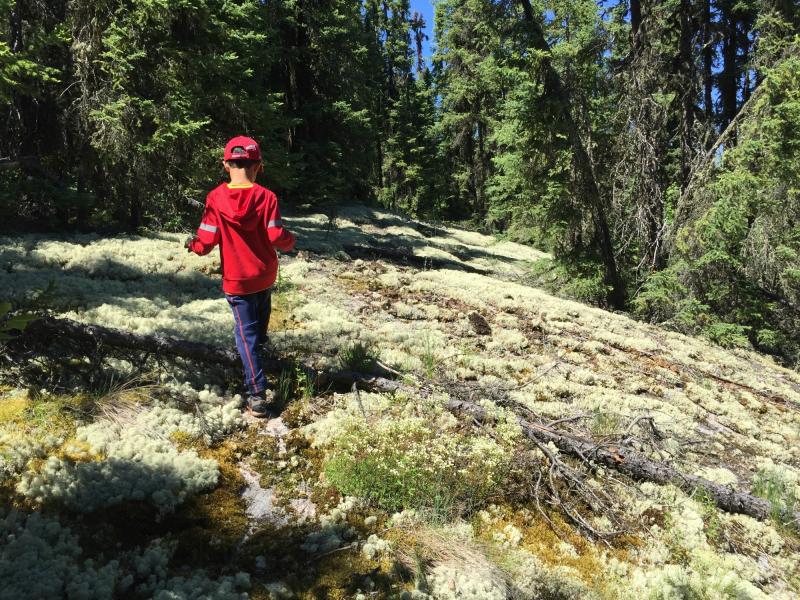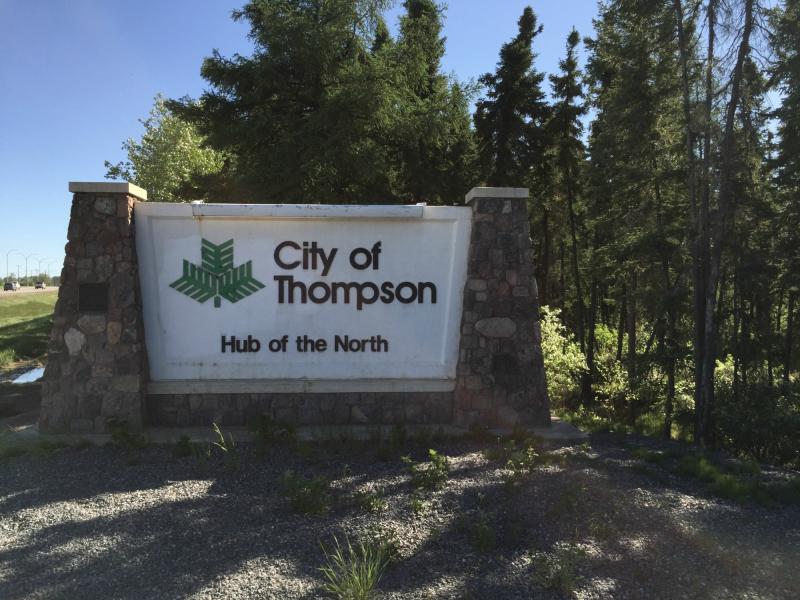
My friend called me the other day while her toddler shouted, “NO!” in the background. She wondered why toddlers are really good at saying, “no” but many adults have a tough time doing the same.
I’ve been thinking about this question and have some ideas about why we lose the ability to state our needs as clearly as a toddler. When my children say, “I’m hungry” even if we were in the middle of something and, “I don’t want to do that. Not doing it,” I’m often envious of their ability to state their needs so clearly.
I believe the two main reasons many of us have a hard time clearly speaking up are that we want to steer away from conflict and our negative core beliefs convince us that stating our needs is more trouble than it’s worth.
The word “conflict” really is a complex one: some experiences of conflict end peacefully and some end in violence. Many of my clients say, “I don’t like conflict.” Why is this? Conflict can be quite productive and helpful sometimes – it all depends on your personal experience of conflict as you were growing up, and how able you feel to let go of the other person’s reaction to the tricky situation.
Lets define conflict by over simplifying it. In general terms, conflict is when a person or group needs to tell another person or group something that is expected to cause tension. The tension can causes people to experience physical and/ or emotional intensity, which can feel uncomfortable. It’s this uncomfortable feeling that many seek to avoid. However if people keep at it and work through the feelings, everyone can come out okay on the other side.
How the adults in our childhood lives handled disagreements often becomes how we handle conflict when we become adults, too. If we were taught that conflict causes aggression, violence, drinking, shouting, or stonewalling (when someone refuses to address the situation or speak with you), we’re likely to say what we need to in order to keep the peace. We might even say things to please another person to prevent potentially emotionally or physically painful interactions.
As I mentioned earlier, negative core beliefs influence our behaviour and change our ability to say, “No, I know that you need me to do this thing right now but I just can’t.” If we have come to believe that speaking up is a negative thing, we’ll stop doing it. (I know my eBook is about reducing Tantrums, but I dedicated the first section to understanding Core Beliefs and believe it’s a good read for anyone. Isn’t conflict a kind of adult-tantruming?)
We might also believe that the other person’s reaction to our words is our fault, but it really isn’t. How another person reacts to moments when we say, “no” or use our words is not actually our responsibility. Sure, it IS our responsibility to say, “no” as kindly as we can but if the other person doesn’t have the ability stay cool and calm to talk about it or accept our words, that’s a reflection of their own set of core beliefs, their communication skills, and their ability to control that reptilian part of the brain that gets triggered in tricky moments.
This is the dynamic that toddlers don’t know about. When they shout, “no” or “I’m hungry” they don’t expect others to freak out on them – they expect to get their way or some food.
As they get older, they watch the adults in their lives interact with each other and monitor how it goes for them to see what happens when someone uses their words with another. If that all goes well, the child will continue to do the same: to say when there’s a need that isn’t being met or an aversion or dislike to doing something.
If speaking isn’t responded to with support, children will keep trying to say what they need until they reach a point of futility where they give up doing so. This is when people inadvertently learn that the impact of saying “no” hurts them more than it helps them – or does it?
I view the tension of conflict or needing to say “no” as a black, goopy ball. If we need to speak up, but don’t, we keep that ball inside us to slosh around and stick to our guts. If we do speak up, we give the ball away. Either that ball is going to be caught by someone else or together everyone can melt it down to nothing (with care, empathy, and listening).
Just like anything, it starts with practice. Identify when you want to say “no” and give it a try with someone you know has a balanced disposition. After the interaction, consider what went well and what you might try differently next time. Then congratulate yourself for your act of bravery.
Try not being passive aggressive if that’s a pattern for you, like just not returning an email if you’d like to say “no” to an invitation. Respond to that email with a polite no. I often receive invitations from PR companies, offers to receive products from brands, requests to speak, or requests to read and review books. Instead of just not responding, I started saying, “Thank you for thinking of me but I’m going to say a grateful ‘no’ right now due to my full schedule.”
Try people out! They might be more accepting and gracious than you expect. Many of us understand when our plates are full and don’t like the feeling of being overwhelmed. Most people are able to be compassionate and understanding.
I also think our toddlers can be our teachers when it comes to stating our needs. Watch how they do it without thinking too much about others. They are certainly good at putting themselves first. We can combine their expertise at speaking up with the empathetic words we have learned from experience to put our needs back at the top of the priority list while being mindful of the other person/ people involved.
![]() RELATED: 5 Steps To Reduce Sibling Conflict In Your Family
RELATED: 5 Steps To Reduce Sibling Conflict In Your Family
Do you have any questions or comments? Please write those here or over on my Facebook page.

This past week, a young person I know had an absolute meltdown in front of me. It wasn’t the enraged, flipping out kind but rather the feeling defeated, second best, and unimportant kind. His younger brother was in the same athletic program as him, and for three of the five days they were there, the younger one won a “camper of the day” award.
The older sibling is thoughtful, courteous, and a bit quiet; the younger one is gregarious, engaging, and outgoing. The boy looked at me and said, “But I tried so hard to get ‘camper of the day’ and he keeps getting it even though I won the game and was helpful all day. Why is he getting it and not me?”
While this young guy was talking to me, I couldn’t help but flash back to when I was a child. Parenting was much different in those days – the “be seen and not heard” mantra was common – and I thought about what I would have done at his age when I was a child: I would have shut down and kept it in. I would have carried that sad, defeated feeling with me for a long time, likely developing resentment toward my sibling or friend.
In that moment I became aware of doing what I could to keep the gates open for him to get it all out. I kept nodding, smiling, and staying with him while he told me all about what he felt was unfair.
When he stopped talking, I told him about another client I had who shared a similar experience where she felt everyone liked her brother much more than her. The woman later realized that it was really about how their two personalities were very different and how other people responded to those personalities. I asked this boy about who he is and who is brother is and as he explained this to me, he started to see how people might respond to each of them in a different way even though they were both friendly and caring people.
As we continued to talk the tears stopped and his shoulders relaxed. He switched to telling me about a LEGO set he was working on at home. After that happened, I knew he was processing the emotions. The next time I saw him, I mentioned how even if we have very big, intense feelings, they will move on – that feelings are like a waves which rush in and out and we need to hang on and ride them.
I’ve been thinking a lot about this exchange and how a few of his negative core beliefs must have been triggered in that experience, causing such a huge reaction from his brother getting “camper of the day.” I’m guessing those beliefs might have been: I’m not as likeable as my brother, I’m not capable, and maybe, I’m not good enough.
Negative core beliefs are those inner messages we tell ourselves based on how we interpret events and interactions with others. For example, if the younger brother is continually being congratulated and celebrated for his outgoing nature, but the older one is not, that older boy might start to believe there is something wrong with him. (The first section of my eBook is written about core beliefs if you would like more information.)
I’d say the most common thing I hear from the young people and teenagers I work with is that they wished their parents listened and understood them more. When they say that, I know they mean that they wish they could talk about their challenging experiences without being dismissed, discouraged, or invalidated.
As I listened to this boy, I was grateful that he was able to keep talking about everything that was upsetting him. It was lovely to watch him struggle through that then naturally move on.
When our child (or partner/ friend/ sibling) has something to share, it can be very tempting to think about our own similar experiences and want to hijack the conversation or feel annoyed by the interruption. I encourage parents to take the time to really hear their children when they go through a rough patch. I know we often have lots on our plates, but that time we invest to hear will have a big difference on how that child processes what happened.
Here are five suggestions to helping children stay emotionally open:
Use nods, smiles, and touches on the shoulders to encourage your child to keep explaining what (s)he feels or has happened. If (s)he wants to stop talking a bit early about things that stir big emotions, you can try saying: “Just keep talking – it’s okay.”
Sometimes direct eye contact can feel too intimidating when people have something big to talk about. If you think that might be the case, try standing or sitting beside the person.
If the child stops and you believe there is more to say, try asking an open-ended question to gently nudge him/ her along. Perhaps something like this: “It sounds like you were upset when your brother got that award again. What happened when he came back to sit beside you?”
As Dr Dan Siegel says, “name it to tame it.” Draw the child’s attention to the feelings (s)he is experiencing: “When your brother’s name was called again, did you feel more angry or more sad?” I also use shared experiences kind to help children connect with their feelings like this: “Hmmm… if I was in the same situation, I might feel sad thinking that people liked my brother more than me. Is that how you were feeling?”
We can inadvertently give children the feeling of not being important when we say things like, “Oh, I’m sure they didn’t mean it,” or “I bet it wasn’t that bad,” and “Well, life is just unfair sometimes.” Those kinds of statements aren’t really an opening for the child to talk it through.
![]() RELATED: Getting Past a Parenting Bad Day
RELATED: Getting Past a Parenting Bad Day
If you have any comments or questions, I invite you to comment here or over on my Facebook page.

Having travelled extensively in every province in Canada but Newfoundland (I promise to get there soon!), I can say that Northern Manitoba is one of my favourite places to be, and it’s not just because I grew up there. This location might not be front-of-mind for an adventurous family summer vacation, but I believe it should be!

In Northern Manitoba, you can experience the amazing beauty and fun of true wilderness, lakes, beaches, and the Boreal forest without crowds or inflated prices while at the same time being close to a city (Thompson) where restaurants, attractions, and services are plenty. Loons, black bears, eagles, lynx, and wolves live around here so look for them!
Northern Manitoba, the Thompson area in particular, may take a bit more effort to get to but the memorable experience that awaits your family makes it a trip well worth taking. I bring my family here from London, ON.
This is what makes the Thompson area so special:
Paint Lake Provincial Park is a family playground heaven! Paint Lake has: a marina with a boat launch, a large beach area that you can park close to, playground, picnic area, hiking trails, fishing, and a beautiful campground. Paint Lake also has cottages along its waterfront, where several people who work in Thompson live. If you are interested in renting a cottage, boat, or other watercraft like canoes, contact the Paint Lake Lodge.

The fishing in Northern Manitoba is outstanding, particularly in the early part of the summer, so come prepared to fish! If you need any fishing gear, get what you need at the Thompson Canadian Tire (you can get a fishing licence here, too). The Paint Lake Lodge also has a fair selection of supplies. Don’t forget to buy minnows!
The fish caught here are walleye/ pickerel, pike (locals call them “jack fish”), and perch, and sauger. Our family just keeps the pickerel to eat but others say pike is very tasty too, but you’ll need to know how to fillet out all the bones.
Pisew Falls is the second highest waterfall in Manitoba, and one of the prettiest I have ever seen. It is located 74 km South of Thompson on highway 6, along a short side-road off the highway. The picture at the top of this post was taken there.
The area in and around Pisew Falls is purely stunning. There is a boardwalk leading down to the falls themselves, and a path from the other end of the parking lot to the Rotary Suspension Bridge that spans the lower part of the falls. Keep your eyes open for eagles here!

Pisew Falls is a good half-day adventure for families. I’d suggest taking a snack or picnic lunch and having that in the large grassed area in the middle of the driving loop at the Falls trailheads. The path to Pisew Falls is well marked on the South side of the loop, and the Suspension bridge path is not as well marked, located on the North side of the driving loop.
If you are interested in a challenging hike, consider the 22km loop to Kwasitchewan Falls, which is the highest falls in Manitoba. The trailhead for this trek is at the Suspension bridge.
This is a tough, backcountry hike so make sure you are in great shape and have the proper gear to do it. My sister and I did this hike several years ago in a single day (we started early in the morning), and really enjoyed it. Please read through the hike recommendations and view a map of the trail in this link to Manitoba Parks website.
The Setting Lake, Sasagiu Rapids Lodge, and town of Wabowden area provides full-service camping, fishing, touring, and cottage-going. There is a campground and boat launch at the South end of the lake and also another one at Sasagiu Rapids Lodge.
Setting Lake is the other major cottage area near Thompson: 90 km South on highway 6. This picture adequately demonstrates why this lake was named, “Setting.”

There are four cabin roads here, which provide access to all the cottages on this lake. These cottages are home to many families who either live here year-round, part-time, or visit recreationally. Within these roads are hiking paths, ATV trails, beach access, and Canadian Shield boulders to climb.

A Hudson’s Bay fur trading post was established in 1795 on Setting Lake in the area known today as “Sandy Beach.” Visitors to this area can see the original chimney from the post as well as a trapper’s cabin built in the 1960s. Please read this website for more information. I took this picture of Sandy Beach last week when we were there:

This beach is located on an island so you’ll need a boat to get there. Steve Grandbois at Sasagiu Rapids Lodge provides Sea-Doo and boat tours to this area (as well as cottage rentals) if you need someone to take you there.
We also had the great fortune to watch an Eagle soar down from a tree to grab a fish right out of the water a short distance a way from us!

Some information about the restaurants in the area:
Sasagiu Rapids Lodge serves Canadian and very good Thai food (free wifi). Please note they are closed on Tuesdays.
My’s Place is a beautiful log building at the turn off from highway 6 to the town of Wabowden. You can buy gas and minnows here, too.
Wabowden Ice Cream Parlour: In addition to soft and hard ice cream, this is a sit-down restaurant with great burgers and fries. Turn off of highway 6 towards Wabowden. Go through town, over the tracks, and turn right onto Cran Dr. There is a general store next door that has basic groceries, as well as an ATM.
I have to mention the Aurora Borealis (Northern Lights) of the North! An expert to contact regarding seeing or photographing this natural phenomenon in Northern Manitoba is Hugh Fraser. Hugh is a nature and wildlife photographer who lives at Setting Lake. Please visit his website to see the wonderful photos he has taken in this area and to contact him if you are interested in photographing the Aurora yourself.

There are bugs in the North. Actually, there are bugs here in London, too, and other cities around Canada, but it’s good to know that the mosquitoes, blackflies, and “horse flies,” can be out up north.
My suggestion is to prepare for the bugs and try hard to not let them, well, bug you. The mosquitoes are generally not around during the day, particularly if it is windy. The horse flies (think big house flies that bite) do come out if you are near the lake and are wet. Have a towel handy when you get out of the water to prevent bites.
Denim, rubber boots and bug spray are the best way to reduce bug bites. Also stay indoors from dusk to sunrise.
Thompson, MB is known as the “Hub of the North,” and also the “Wolf Capital of the World.” It is the regional trade and service center of Northern Manitoba.

There is much to see and do in this area—I recommend reading through the Heritage North Museum’s website, as well as contacting the executive director, Tanna Teneycke who is a wealth of information about the region.
We spent our Thompson days trekking through Spirit Way, playing at the many wonderful playgrounds in the city, and visiting the location of the best French fries I have tasted (and I’ve been all over the world!): Popeye’s Restaurant.

It’s worth the trip for an experience of a lifetime!